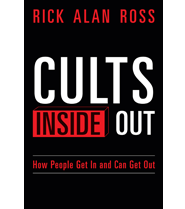How conspiracy theories polarize society and provoke violence
Published By admin
In today’s technologically interconnected world, the ability to concoct and spread conspiracy theories has become easier than ever before. This became evident after the recent assassination attempt on former U.S. president Donald Trump. Millions flocked to social media to share their interpretations of the event and the would-be assasin’s supposed motives.
“BlueAnon” theories suggested that the attack was staged to influence the upcoming election. BlueAnon, a play on QAnon, refers to conspiracy theories espoused by liberals.
The rapid dissemination of such theories has fuelled already existing echo chambers, where misinformation was amplified often without verification or critical examination.
However, the attempt of Trump’s life is hardly a novel phenomenon. Political violence, like assassinating political leaders, has repeatedly happened at regular intervals — particularly in the United States. What is new is the way technology, particularly social media, is amplifying conspiratorial rhetoric and making it harder to challenge.
Conspiracy theories are essentially misinformation advanced by a few individuals or groups to explain certain events. These theories aren’t based so much on objective facts, but rather through often loosely connected bits of information.
In recent years, for example, QAnon has emerged as a significant phenomenon, promoting ideas like a deep state controlling the United States government and aiming to maintain power. The COVID-19 pandemic saw a plethora of conspiracy theories about everything from the origin of the virus to the safety of vaccines. In Canada, conspiracy theories swirled during the so-called Freedom Convoy that occupied downtown Ottawa for weeks in 2022.
Today, social media platforms have become the primary avenue for the spread of such theories. Followers often exist in echo chambers where they draw and reinforce their beliefs from each other. Sometimes, information that appears harmless to share. However, once it’s shared, it can lead to significant negative consequences, including the radicalization towards violence.
Many might associate conspiracy theories with far-right politics. However, radicalization scholars have observed that “a more conspiratorial mindset has become more pronounced in liberal circles over the last eight months.” Meta’s Threads has become a hotbed for BlueAnon conspiratorial content, demonstrating that conspiracy theories are not confined to any single political spectrum.
Radicalizing People to Violence: Conspiracy theories provide individuals with the necessary ideology to justify violence. The radicalization process is often subtle, beginning with seemingly harmless content and gradually encouraging young people to move away from moderate, mainstream to more extreme beliefs and actions.
Harming innocent people: Conspiracy theories can harm innocent people who may have nothing to do with them. For example, an Italian sports commentator was falsely accused by conspiracy theorists of being behind the attempt on Trump’s life, claiming he was an “antifa extremist.” Such accusations could have tarnished his reputation and potentially put him at risk. People’s personal and professional lives can be severely impacted, leading to loss of employment, social ostracism and even threats to their life.
Content retrieved from: https://theconversation.com/how-conspiracy-theories-polarize-society-and-provoke-violence-234786.






